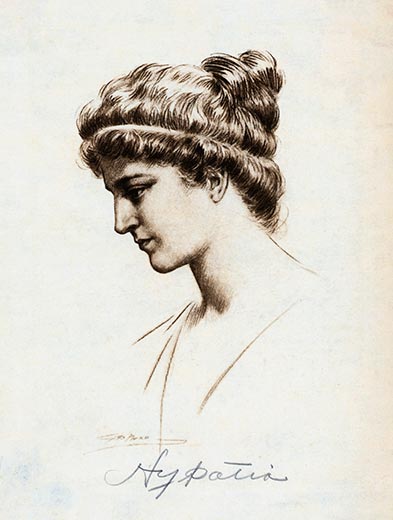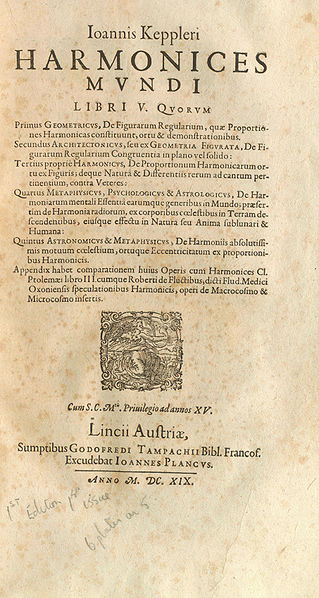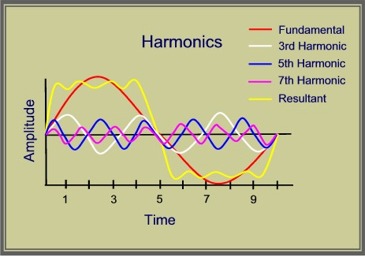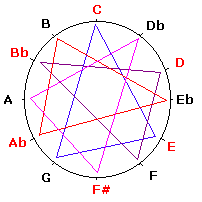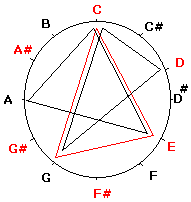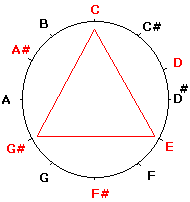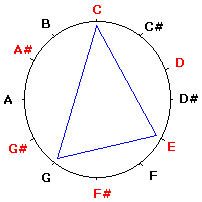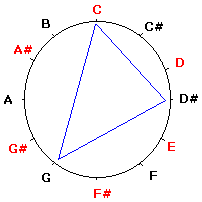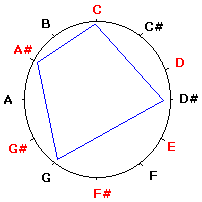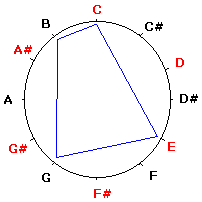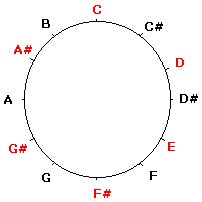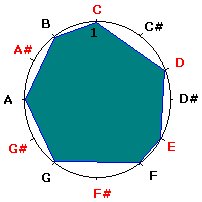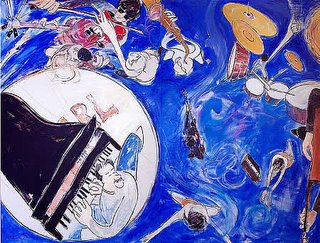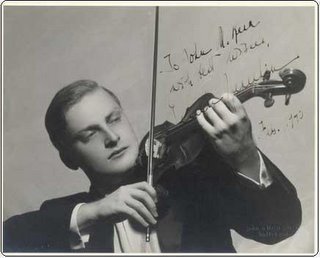Hey! in this picture you can see musical harmony and match it with geometry!
Here,You can play with intervals , same notes,scales, modes, geometrical shape that caused by different sequences,....
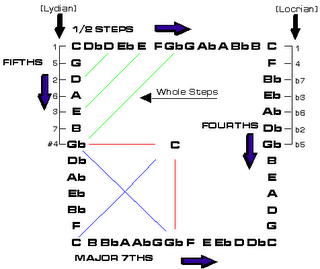
In first you see chart created by half steps, major 7ths, perfect fourths and perfect fifths
(I):
1-find and join same notes ,(you can write them as any scale or your favor sequence inside the chart,too)
2- attention to result shapes and find new relation between them
(II):
1- what is your favor scale ?
2- find its notes on chart,then write numbers behind them
3- try to create a shape by following numbers,
(III):
how appears a mode on chart ?if you move mode's chart,which mode or harmony caused?
Modes and The resulting scale degrees are :
C Ionian - 1 - 2 - 3 - 4 - 5 - 6 - 7 - 8/1 ( C D E F G A B C)
D Dorian- 1 - 2 - b3 - 4 - 5 - 6 - b7 - 8/1 (D E F G A B C D)
E Phrygian-1 - b2 - b3 - 4 - 5 - b7 - 8/1 ( E F G A B C D E)
F Lydian-1 - 2 - 3 - #4 - 5 - 6 - 7 - 8/1 (F G A B C D E F )
G Mixolydian-1 - 2 - 3 - 4 - 5 - 6 - b7 - 8/1 (G A B C D E F G)
A Aeolian-1 - 2 - b3 - 4 - 5 - b7 - 8/1 (A B C D E F G A )
B Locrian-1- b2- b3 - 4- b5 - b6 - b7 - 8/1 (B C D E F G A B)
discover new games and try to find its harmony!
